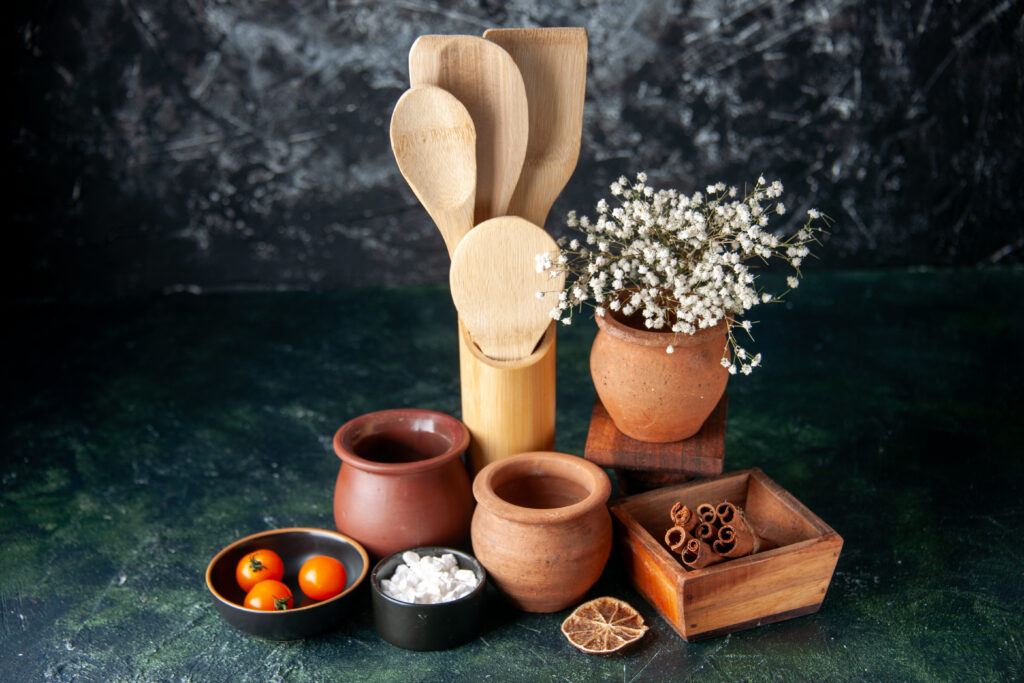Introduction to Sustainable Cookware
Why Cookware Matters for the Planet
We often overlook our pots and pans when talking about sustainability. But cookware plays a huge role in how eco-friendly your kitchen is. Every time we cook, we make choices that affect our health, our family, and the planet.
The Growing Need for Sustainable Kitchenware
With climate change and waste pollution on the rise, choosing sustainable cookware is more important than ever. Many consumers are now seeking ethical, non-toxic, and long-lasting options for everyday cooking.
What Is Sustainable Cookware?
Defining Sustainability in Cookware
Sustainable cookware refers to utensils that are made using eco-friendly materials, ethical labor practices, and designed for long-term use. These products reduce your carbon footprint and waste generation.
The Life Cycle of a Pot
Think about where your pan came from and where it will end up. A sustainable cookware item considers the entire life cycle—from raw materials to disposal or recycling.
Common Cookware Materials and Their Impact
Aluminum and Stainless Steel
Aluminum is lightweight and affordable but often coated with synthetic materials. Stainless steel is durable and recyclable, making it a preferred sustainable choice.
Cast Iron and Copper
Cast iron lasts generations but requires maintenance. Copper is efficient but often involves unsustainable mining processes.
Key Point 1: Choose cookware materials that balance performance, health, and environmental safety.
Toxic vs. Non-Toxic Cookware
Harmful Coatings and Materials
Teflon and other non-stick coatings often release toxic fumes at high temperatures. These are not ideal for long-term health or environmental safety.
Safer Alternatives
Look for ceramic, glass, or seasoned cast iron. These are safer for you and your family.
The Role of Longevity in Cookware
Durability Equals Sustainability
The longer your cookware lasts, the less frequently it needs to be replaced. That means fewer resources used and less waste generated.
Investing in Quality
Cheap cookware might save money upfront but often fails quickly. Invest in pieces that will last decades.

Recyclability and Cookware
End-of-Life Disposal
Some cookware is recyclable, but others end up in landfills. Always check if your pots and pans can be recycled when they wear out.
Brands That Offer Recycling
Some brands offer take-back programs or guidance on recycling. Supporting these brands encourages better industry practices.
Key Point 2: Always consider what happens to your cookware when it reaches the end of its life.
Cookware and Energy Efficiency
Heat Conductivity Matters
Materials like copper and cast iron conduct heat well, reducing the energy needed to cook. This lowers your environmental impact over time.
Design Efficiency
Cookware with flat bottoms and tight-fitting lids can cook food faster and retain more heat.
Ethical Manufacturing
Labor and Fair Trade
Sustainability also involves people. Ethical cookware companies ensure fair wages and safe working conditions for their laborers.
Transparency in Sourcing
Choose brands that openly disclose their material sourcing and labor practices.
Cookware and Health
Chemical Leaching
Some non-stick or coated pans can leach harmful chemicals into your food. This not only impacts your health but also contaminates the environment.
Safer Cooking Practices
Use wooden or silicone utensils to preserve your eco-friendly cookware and reduce the risk of chemical contamination.
Key Point 3: Sustainable cookware benefits your health as much as it benefits the planet.
Popular Sustainable Cookware Brands
Brand Highlights
Companies like Lodge (cast iron), GreenPan (ceramic), and Made In (stainless steel) lead the market in ethical, long-lasting cookware.
What Makes Them Sustainable
From packaging to shipping, these brands focus on reducing waste and promoting circular economies.
Comparing Sustainable Cookware Options
Pros and Cons of Each Type
No cookware is perfect. Cast iron is heavy but durable; ceramic is non-toxic but fragile. Choose based on your cooking style.
Cost vs. Value
Don’t just consider price—look at how many years of service you’ll get. That’s real value.
Cookware Maintenance for Longevity
Cleaning Techniques
Proper cleaning extends life. Avoid dishwashers for cast iron or wooden handles. Always follow manufacturer guidelines.
Seasoning and Storage
Seasoning isn’t just for food. Season cast iron to maintain its non-stick surface naturally.
Cookware and Cultural Sustainability
Traditional Methods
Earthenware, clay pots, and brass cookware are sustainable and culturally rich. They often require fewer resources to produce.
Reviving Old Traditions
Using ancestral cookware connects us with heritage and slows down the consumer cycle.
Key Point 4: Traditional cookware isn’t outdated—it’s timeless, sustainable, and meaningful.
Buying Second-Hand Cookware
Thrift Shopping for the Planet
Gently used pots and pans are often just as good as new. It reduces manufacturing demand and keeps items out of landfills.
Safety Precautions
Inspect thoroughly for cracks, rust, or missing parts. Some vintage non-stick items may contain unsafe materials.
Cookware for Special Diets
Cookware That Enhances Nutrient Retention
Clay and cast iron are excellent for slow cooking and nutrient preservation, perfect for clean-eating enthusiasts.
Avoiding Allergens
Make sure your cookware is free from nickel or other allergens if you have sensitivities.
Packaging and Shipping Sustainability
Eco-Friendly Packaging
Look for brands that ship with recyclable or compostable materials.
Carbon-Neutral Delivery
Some companies offset their shipping emissions by investing in renewable energy or tree-planting.
Sustainable Cookware Storage Solutions
Organize Smartly
Proper storage reduces damage and prolongs the life of your cookware. Use pot racks or cloth liners between pans.
Reuse and Recycle Racks
You can even use old bookshelves or recycled materials for DIY storage solutions.
Key Point 5: Sustainable cookware requires sustainable habits—care, organization, and intention.
Cookware for Induction and Modern Cooking
Induction Compatibility
Not all cookware works with induction. Choose ferrous-metal cookware for better compatibility and energy use.
Tech-Enhanced Eco Cookware
Some brands now offer smart cookware that regulates temperature for maximum efficiency.
DIY Sustainable Cookware Fixes
Fix, Don’t Toss
Loose handles? Worn-out seasoning? Fix it before you toss it. Small repairs can extend your cookware’s life by years.
Resources and Communities
Online forums and local workshops can teach you how to maintain and repair old cookware.
Final Thoughts on Sustainability in Cookware
Conscious Cooking Starts with the Right Tools
Every pan you buy is a vote for the kind of world you want. Choose cookware that reflects your values.
The Bigger Picture
You don’t need a complete overhaul. Start small—switch one pot or pan and build your sustainable kitchen gradually.
FAQs
- What is the most sustainable cookware material? Cast iron and stainless steel are top contenders due to longevity and recyclability.
- Are non-stick pans bad for the environment? Yes, especially those with PTFE coatings like Teflon, which release toxins.
- Can cookware be recycled? Some types like aluminum and stainless steel can be recycled. Check local guidelines.
- How long should good cookware last? With care, cast iron and stainless steel can last decades.
- Is ceramic cookware sustainable? Yes, especially if free from toxic glazes and responsibly manufactured.
- What is the healthiest cookware? Cast iron, stainless steel, and ceramic are considered safest and healthiest.
- Does sustainable cookware cost more? Initially yes, but it pays off in long-term durability.
- How can I make my current cookware more sustainable? Maintain it well, fix small issues, and use it mindfully.
- Is buying second-hand cookware safe? Yes, if you inspect and clean it thoroughly.
- Can I compost old cookware? Not usually, but you can repurpose or recycle depending on the material.

